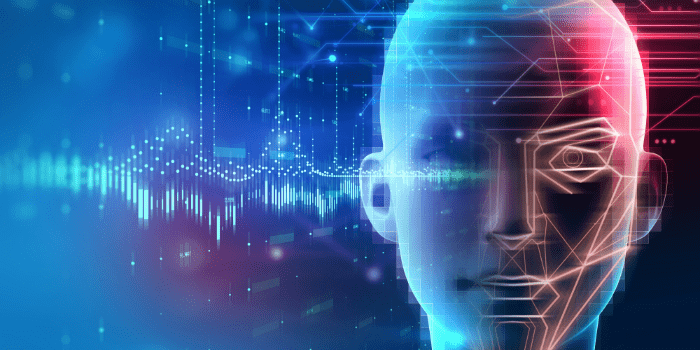
Latin America. The company Idemia shared the trends that they consider will be the most important in the biometrics sector for this 2020. The company says the full potential of biometrics has not yet been developed. The public and private sectors are driving its increasing use. In our increasingly connected world, biometrics is established as one of the key enablers of its digital transformation.
Today, the core focus of the biometric industry is to protect our identity and improve security for all of us. As a global leader in biometric solutions, IDEMIA explores the top four biometric trends for 2020.
1) The use of multi-biometric identification adds a higher level of security to first widely used biometrics for identity verification. Today, other biometric data such as face, iris and DNA are also commonly used. 2020 will see more and more solutions offering multi-biometric identification. The combination of various types of biometrics improves security and adds a high level of detail.
Depending on the nature of the transaction or interaction, different levels of security may be necessary. We can already unlock our smartphone with our fingerprint or our face, as this is a comparably less sensitive action. In contrast, mobile biometric devices using fingerprints and faces have been developed for security agencies, allowing officers to verify people's identities while patrolling the streets.
Another example is the electronic national ID card in Nepal. Nepalese citizens can use their ID cards to interact with their bank, so both fingerprint and iris data are integrated into the card for maximum security. 2020 will see the growth of this trend.
2) The increased exposure of biometrics requires top-notch technology to protect data.
Today, the public and private sectors face the challenge of achieving two goals simultaneously:
● Convenient and enhanced services in a digital world
● Prevention of identity theft when using these services
Biometrics is the safest way to verify an individual's identity. With the assistance of advanced technologies, identity verification with biometrics is quick and easy. However, due to their increased use, biometric data is increasingly exposed.
In addition to this, the trend of storing data in the cloud increasingly includes even the most sensitive data. From startups to large multinationals, cloud computing has revolutionized the way many organizations store and interact with data by facilitating its management, flow, and exchange.
Biometric data is arguably one of the most sensitive types of data that can be obtained. 2020 will try to develop ways to provide extremely strict cybersecurity to protect biometric data, in the cloud or wherever it can be stored, processed or shared.
These three ways of protecting data will ensure that we can continue to benefit from adequate services and security at the same time:
1. Multi-party secure computing. While the security of data at rest and in transit is quite common, the hardest part is protecting the data being processed. Traditionally, the processing party had to be able to "see" the data in order to work with it. The risk related to this method is significantly reduced when data processing work is shared between different parties. It means that there is not one central player processing all open and vulnerable data, but several contributors. Only by breaching the data processed by each player, the data will make sense to the malicious author. In 2020, we will see a much wider application of this methodology.
2. Verifiable computing. For the security of biometric data, this is a very interesting trend in data processing, which will be further developed in 2020. Verifiable computing means that a central entity can delegate data computation to another potentially unknown, unverified entity while maintaining verifiable results. In the world of biometrics, this could mean that we could match our own data to verify our identity, for example on our smartphone (i.e. the unknown, unverified entity), without anyone doubting the validity of the computing we have done. This means that we will control our biometric data at all times and that they would never leave our own device.
3. Homomorphic encryption. Homomorphic encryption protects data both at rest and in transit. However, the Holy Grail that we will see in development this year, is the application of this encryption technology also to the data that is being processed. The goal is simple: to ensure that the data processor cannot decipher or even understand the content being processed. It is a method of performing calculations on encrypted information, without decrypting it first. In 2020, we will see a move towards standardizing homomorphic encryption globally. The standard will give a boost toward the goal of using encrypted biometric data while computing. With this last step, end-to-end data privacy can be achieved, since at no time is the data exposed without protection.
3) Widespread adoption of facial recognition technology
With high levels of performance in terms of speed and accuracy, it's no wonder we see wide adoption of facial recognition technology in 2020. Already in recent years, many use cases have demonstrated how this technology provides convenience and security. It is one of the least intrusive biometric identification methods because it requires little behavioral adaptation.
Today, facial recognition is already used to enable safety and comfort. It is, for example, an important enabler in managing the growing number of travellers globally. In Europe, more than 18 countries are using facial recognition, allowing 200 million passengers to cross borders with their faces. . Banks have also begun to implement biometrics-based systems, so users no longer need to visit branches when opening new bank accounts. They simply capture a photo of their ID and take a selfie. Life verification functionalities allow the customer to demonstrate who they are with a few movements of their head, ensuring that a photo or video of them is not used to impersonate them.
a) Protection of public places with video analysis.
Enhanced video analytics adds intelligence to existing video surveillance. This technology will play an increasingly important role in 2020 in providing effective solutions to detect threats. Combined with efficient incident response platforms, video analytics allows security agencies to react quickly when a person of interest is detected in a vulnerable area. The analysis provided may comply with the strictest data protection laws; The detection of biometric data, that is, the face, by far, is not its only capability.
During this year we expect to see this type of tool and a sharp increase in its use.
b) Facial recognition in new industries.
While most use cases for facial recognition involve the public sector, many technically advanced industries are expected to implement facial recognition technology for added security and convenience, such as the automotive industry. In 2020, more and more proofs of concept will emerge that will allow drivers to access their vehicles and start the engine simply by showing their face.
Thanks to facial recognition, the vehicle will automatically adjust temperature settings, move the seat precisely to suit physical characteristics and preferences, and upload custom data, including music playlists and navigation settings into the infotainment system. In addition, facial recognition replaces the need to search for physical keys (or mobile devices) to open a vehicle and drive. This improves security by defeating "relay attacks," where the author captures the signal from a car key near the vehicle using a special device, and car theft attempts, as the car can only be handled by recognized drivers.
4) Development of a regulatory and ethical framework for the use of facial recognition.
Facial recognition technology offers significant problem-solving potential for use cases related to security and convenience. However, as its use is based on monitoring people's movements, this specific type of biometric data is particularly personal. Citizens must remain in control of their biometric data. They need to know how their data is used, how long it is kept, and for what reason.
To address the concern, in 2019 there were several attempts to develop regulatory and, possibly most importantly, ethical frameworks that define how facial recognition technology should be used. IDEMIA expects this trend to grow in 2020, with national initiatives intensifying at the continental or even global level.
As an industry-leading provider, IDEMIA fosters cooperation between governments, the private sector and technology providers to define a framework that allows all stakeholders and end users to benefit from this technology while addressing public concerns.


























Leave your comment